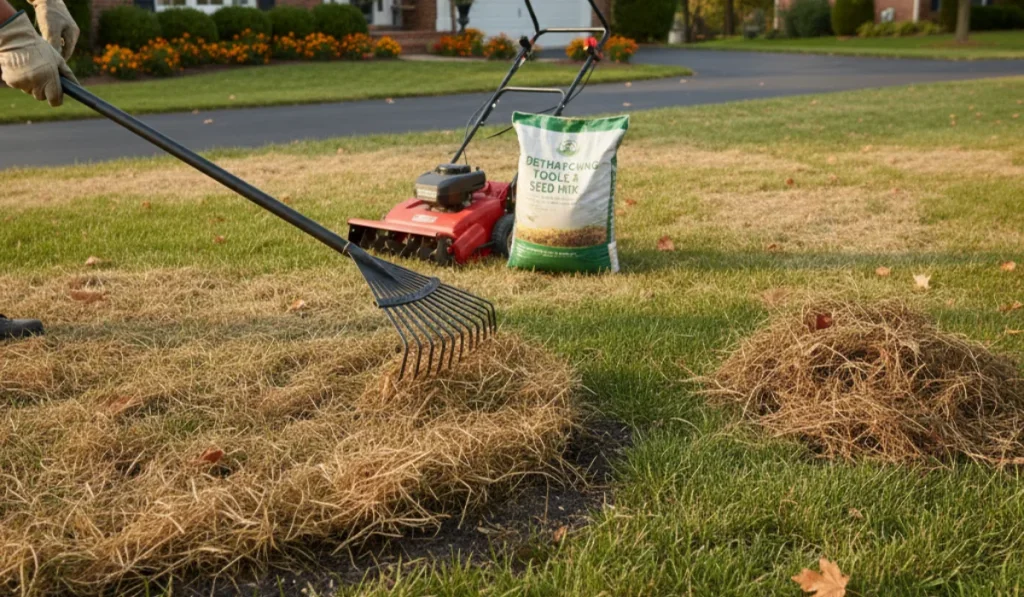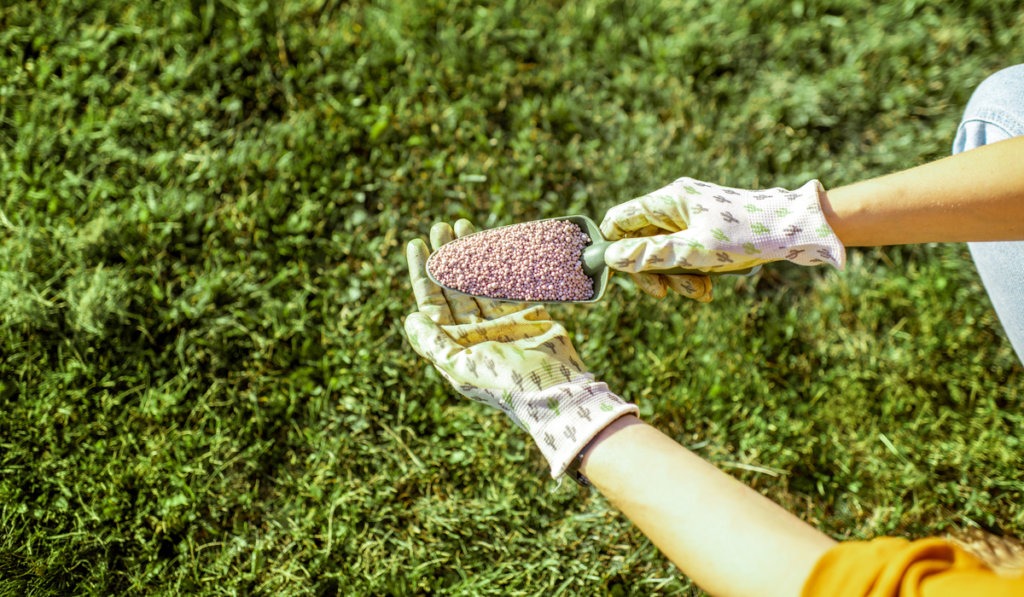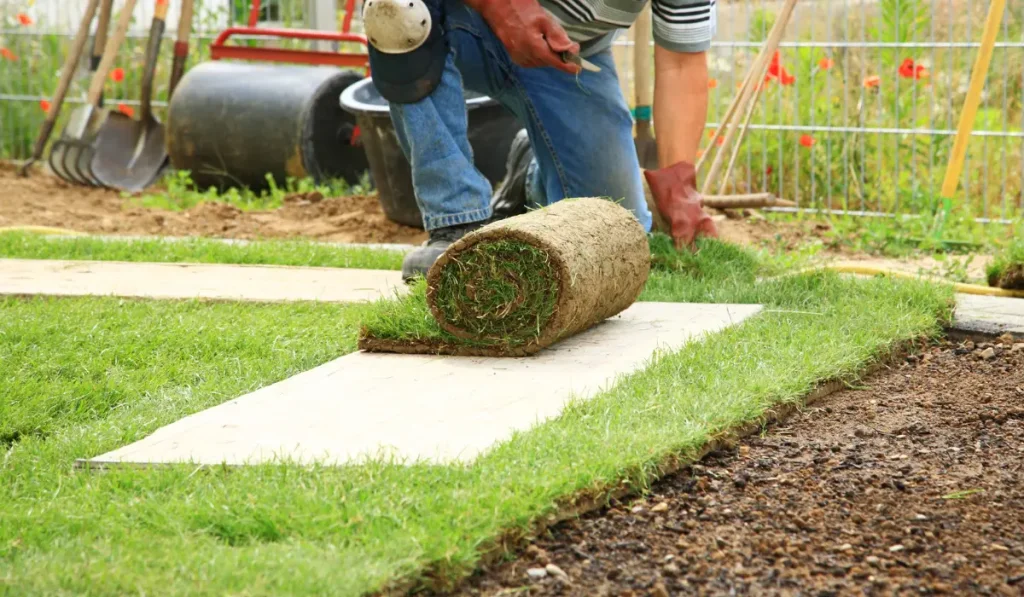If you see brown patches on your lawn or beetles around your outdoor lights in early summer, June bugs may be to blame. Also called May beetles, these pests often do their worst damage underground, and it may take a while before you notice their presence in your property.
In California, where climates range from sunny Fresno to cooler coastal towns, June bug larvae can quietly destroy healthy grass. These larvae can make your lawn patchy and weak as they feed on grass roots.
The good news? You can stop them. In this guide, we’ll walk you through the life cycle and yearly pattern of June bugs, the damage they cause to lawns, which insects are their natural predators, and what you can do to protect your turf before the damage spreads.
Key Takeaways:
- June bug larvae are the real threat. While adult June bugs are primarily a nuisance, their larvae, also known as white grubs, feed on plant roots. June bug larvae can cause dead patches and thinning grass on your lawn.
- Infestations peak in late summer. The best time to inspect your lawn is when grub activity increases in late summer. This is also the best time to apply treatments if needed.
- Prevention starts with healthy lawn care. Regular mowing, deep watering, and proper fertilization make your lawn less attractive to egg-laying beetles and more resilient to damage.
- You have both DIY and professional options. Natural methods like nematodes and milky spores work for light infestations. However, if you have a full-blown infestation, insecticides or professional pest control may be necessary.
What are June bugs?
June bugs belong to the scarab beetle family. Other people also refer to June bugs as ‘May beetles’ or ‘May bugs’. Bugs that affect lawns typically belong to the genus Phyllophaga. You may also encounter chafer beetles and the green June beetle, depending on your location.
Adult June bugs measure half an inch long and are usually reddish-brown or metallic green. These bugs are most active from late spring to early summer. You’ll often spot them fluttering around porch lights and other outdoor lighting at night. But the real damage doesn’t come from adult June bugs. It comes from their larvae, often called white grubs.
Life cycle and timing
The June bug life cycle follows a yearly pattern:
- Late spring: Adult beetles lay eggs in moist soil.
- Early to late summer: Eggs hatch into larvae, which feed on grass and plant roots.
- Fall through winter: Larvae burrow deeper into the soil and overwinter.
- Late spring to early summer: Pupation occurs and new adults emerge.
You’ll start noticing issues like thinning grass and brown patches when larvae begin actively feeding and growing in late summer.
Lawn damage caused by June bugs
When white grubs feed on grass roots, they disrupt the plant’s ability to absorb nutrients and water. Small dead patches often appear first and spread over time, especially in high-traffic or sunny areas.
Common signs include:
- Brown or dead patches that peel back easily
- A spongy feel underfoot
- Animals like raccoons and skunks are digging up the lawn
- Turf that doesn’t bounce back after mowing or watering
Grass needs healthy roots to survive, and June bug larvae go straight for them.
Natural predators and helpful insects
Some natural predators can help when it comes to grub control. Skunks, raccoons, and birds are common natural predators of June bug larvae. However, their digging can cause secondary damage. Beneficial nematodes and parasitic wasps can also help keep grub populations in check.
Pest control and treatment options
DIY methods
If you catch an infestation early, you may be able to manage it with DIY solutions. Some DIY June bug control methods you can try include:
- Apply beneficial nematodes to target the larvae underground.
- Use milky spore as a long-term treatment, particularly against Japanese beetle grubs.
- Aerate and dethatch to improve soil health and reduce grub habitat.
These natural methods can be effective when populations are small and the lawn is otherwise healthy.
Insecticides and professional solutions
The best time to treat your lawn is in late spring, just before the June bug larvae hatch.
Applying a product with imidacloprid during this time helps stop the larvae before they can start damaging your grass. However, if you were not able to prevent the eggs from hatching and are dealing with active larvae, you may need to use curative insecticides.
Working with a local pest control provider ensures correct timing and application, essential in regions like Southern California, where microclimates vary.
Preventing future infestations
You can prevent June bug damage by maintaining consistent lawn care. When your lawn is properly cared for, you’ll have healthy grass that can resist pets and recover faster from damage. Regular maintenance also makes your lawn less attractive to beetles looking for a place to lay eggs. Here are some tips to help you achieve a beautiful, pest-resistant, healthy lawn:
- Mow regularly, but avoid scalping your lawn.
- Water deeply to promote vigorous root growth.
- Avoid over-fertilizing, as this can attract adult beetles seeking lush areas to lay eggs.
- Choose resilient sod varieties, especially those that tolerate heat and drought.
Keeping your lawn healthy is the first line of defense against June bugs and other turf pests. Thick, well-rooted grass makes it harder for beetles to lay eggs and for larvae to feed on the roots. A strong lawn also recovers more quickly from any damage, reducing the long-term impact of pests.
June bugs vs. other lawn pests
It’s easy to mistake June bug damage for other pests, like armyworms. The key difference between these two lawn-damaging bugs is that armyworms chew on grass blades, not roots. That means you’ll often see them on the surface.
On the other hand, June bug larvae stay hidden underground. If you’re not sure what you’re dealing with, dig a few inches into the damaged area. If you find white, C-shaped grubs, you’re dealing with June bug larvae.
Final thoughts
June bugs might only appear for a few weeks each year, but their impact on your lawn can last much longer. Feeding larvae can damage roots and cause brown patches across your yard; a small problem can quickly turn into a big one if left unchecked.
With a mix of natural predators, proper lawn care, and innovative pest control strategies, you can protect your turfgrass from June bugs season after season.
If you’re not sure where to start or if you’ve tried DIY treatments without much luck, chat with a local expert who understands California lawns.
At SodLawn, we help homeowners and businesses choose the right sod and care plans to keep lawns healthy, resilient, and pest-resistant.
Contact us today, and let’s talk about how we can help you protect your lawn from June bugs and their larvae.
FAQs
Are green June beetles different from regular June bugs?
Yes. Green June beetles are larger and metallic green. Their larvae feed near the surface, and adults can damage fruit and foliage, unlike Phyllophaga June bugs.
When is the best time to apply insecticides for June bugs?
Apply preventive products like imidacloprid in late spring before eggs hatch. For active larvae, treat in mid to late summer when they’re feeding near the surface.
What’s the easiest DIY method to get rid of June bug larvae?
Use beneficial nematodes. They’re simple to apply and naturally kill grubs underground without harming pets, plants, or people.



